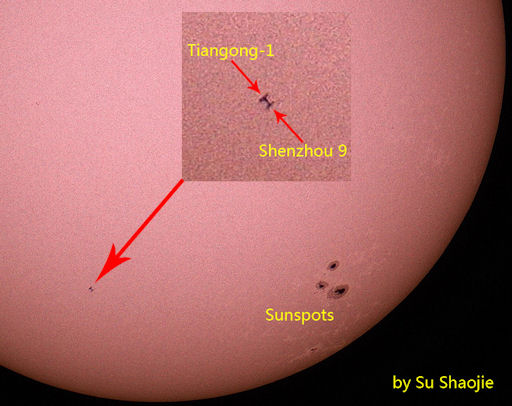HAPPY SOLSTICE: Today, the sun crosses the celestial equator heading south. The moment of crossing or "solstice" occurs at 7:09 pm EDT and marks the beginning of northern summer. This is the longest day and shortest night of the year in the Northern Hemisphere. Meanwhile In the Southern Hemisphere, winter begins. Happy solstice!
CHINESE SPACE TRANSIT: China's space program took another leap forward this week when Chinese astronauts onboard the Shenzhou 9 spacecraft successfully docked with the Tiangong 1 space station. Not long after the docking, which occured on Monday, June 18th, the joined spacecraft passed directly in front of the sun over Xinzhou, China, where amateur astronomer Su Shaojie recorded the split-second transit:

Photo details: Canon 450D camera, 104mm telescope, Baader solar filter, 1/2000 sec exposure , ISO100
"After the Shengzhou 9 successfully docked with Tiangong-1 at 14:07 Beijing time, I was happy to get this opportunity to take a picture of the two spaceship transiting the Sun," says Shaojie. "I used CalSky to predict the timing."